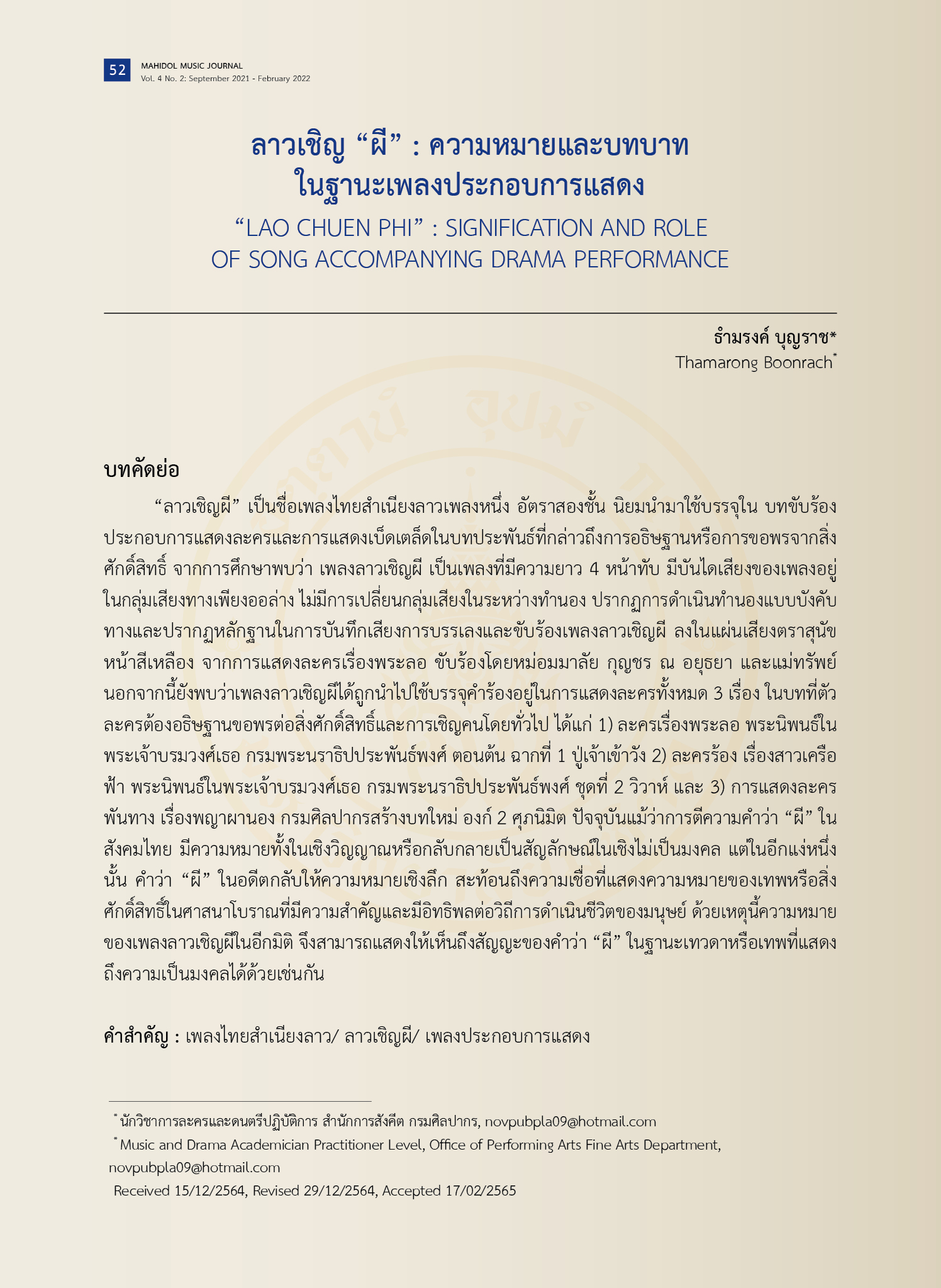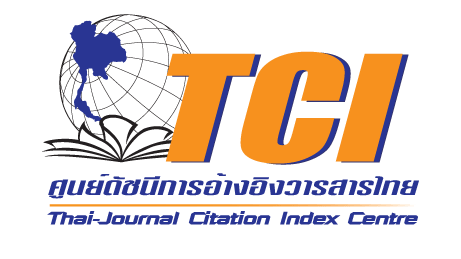“LAO CHUEN PHI” : SIGNIFICATION AND ROLE OF SONG ACCOMPANYING DRAMA PERFORMANCE
Keywords:
Lao Accent Thai Song, Lao Chuen Phi, Traditional Thai Drama MusicAbstract
“Lao chuen phi” is the name of a Lao accent Thai song with a double rate tempo (Song chan) and is commonly performed in a praying or blessing scene of theaters or performances. Through qualitative research, the study revealed that lao chuen phi has the length of 4 measures played in the low musical scale (Thang phiang o lang) without transposition. This musical pattern and traditional practice are in several records, texts, theaters. Lao chuen phi is used in praying or requesting the presence of deities in theaters such as theater plays written by H.R.H. Prince Naradhip Prabandhbongs, Lakon Phra Lor (Act I, The Royal Grandfather Enters the Palace) and Sao Krua Fah A Musical (The Wedding Scene); and the play written by members of The Royal Fine Arts department, Lakon Pantang Phya Phanon (Act II, Favourable Omen). Moreover, the study showed that the interpretation of the word ghost or “phi” in the olden Thai society has a different meaning from today. While this generation regarded “phi” as a ghost or an unholy symbolic, in the olden days, “phi” had a meaning of gods or sacred things and holy beings in ancient religions.
References
ไชยยะ ทางมีศรี. "เพลงลาวเชิญผี." สัมภาษณ์โดย ธำมรงค์ บุญราช. 8 กุมภาพันธ์ 2565.
ณรงค์ชัย ปิฎกรัชต์. สารานุกรมเพลงไทย. กรุงเทพฯ : เรือนแก้วการพิมพ์, 2542.
ณัฐภัทร์ สุรินทร์วงศ์ และบารนี บุญทรง. "พิธีกรรมฟ้อนผีมด : การสื่อสารระหว่างมิติในมุมมองคติชนวิทยา." วารสารวิชาการนวัตกรรมสื่อสารสังคม ปีที่ 5, ฉบับที่ 1 (มกราคม-มิถุนายน 2560): 72-82.
ราชบัณฑิตยสถาน. พจนานุกรมฉบับราชบัณฑิตยสถาน พ.ศ. 2544. กรุงเทพฯ : นานมีบุ๊คส์พับลิเคชั่นส์ จำกัด, 2556.
สันดุสิทธิ์ บริวงษ์ตระกูล. "การสืบทอดสื่อพื้นบ้าน หมอลำเรื่องต่อกลอน." วารสารกระแสวัฒนธรรม ปีที่ 18, ฉบับที่ 34 (กรกฎาคม-ธันวาคม 2560): 81-90.
สุจิตต์ วงษ์เทศ. "'ศาสนาผี' ที่สุดในโลก ยัง 'เฮี้ยน' ที่สุดทั่วไทย." มติชนสุดสัปดาห์ ปีที่ 41, ฉบับที่ 2146 (1-7 ตุลาคม 2564): 68.

Downloads
Published
How to Cite
Issue
Section
License

This work is licensed under a Creative Commons Attribution-NonCommercial-NoDerivatives 4.0 International License.
The copyright of the article belongs to the author. Published articles represent the views of the authors. The editorial team neither necessarily agree with nor take any responsibility for the article.





